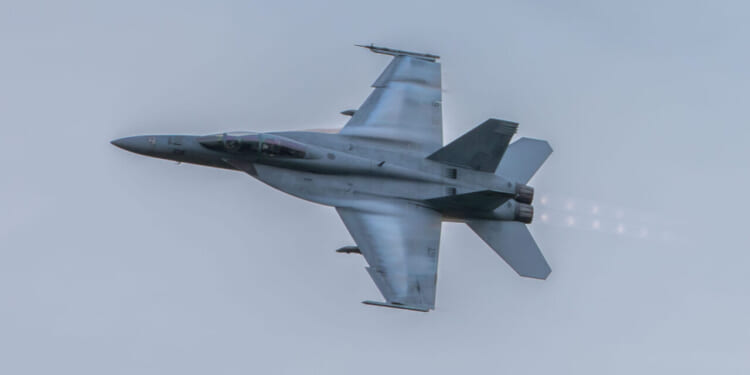The addition of the IRST to more Super Hornets will only elevate the platform’s standing.
Manufacturer Lockheed Martin was recently awarded a contract to provide the US Navy’s Super Hornet fleet with Infrared Search and Track (IRST) 21 Block II systems. As part of the whopping $230-plus million arrangement, Lockheed must deliver 59 infrared receivers, 45 processors, and 20 inertial measurement units by September 2029. This cutting-edge sensor capability was made for the F/A-18 Super Hornet platform, providing pilots with greater detection capabilities at longer ranges. With IRST21 in tow, pilots’ situational awareness is elevated. As detailed by the IRST21 program director for Lockheed, “IRST21 Block II delivers a game-changing leap in passive warfighting capabilities across multiple platforms. By significantly enhancing the range and accuracy to enable weapon employment in challenging environments, this system ensures pilots remain ahead of evolving adversaries and mission-ready at all times.”
The Super Hornet
Serving as the Navy’s premier strike fighter platform, the Boeing-designed F/A-18 platform has earned its reputation as a tried and trusted jet for nearly half a century. Born from the service’s Fighter-Attack, Experimental VFAX program, the Hornet was intended to replace the former A-7 Corsair II, the Douglas A-4 Skyhawk, and the McDonnell Douglas F-4 Phantom IIs during the Cold War. The Hornet eventually evolved into the Super Hornet platform in the mid-1990s, featuring more advanced technologies that continue to help the platform remain relevant in the modern era. The Super Hornet iteration is 20 percent larger than its predecessor and hosts a greater ordnance-carrying capacity. The newest Block III iteration of the Super Hornet is the most sophisticated, equipped with a longer lifespan and technologies that make it more difficult for adversarial radar and aircraft to detect in the skies. In terms of armament power, the Super Hornet can carry some of the most lethal air-to-air and air-to-surface missiles around, including the AIM-9 Sidewinder, AIM-120 AMRAAM, and AGM-158 JASSM.
The Super Hornet’s impressive reputation is well-earned. Most recently, the Navy’s contingent of F/A-18 Super Hornets made headlines for its role in operations against the Iranian-backed Houthis in the Middle East. Super Hornets from the USS Eisenhower carrier strike group took out at least a dozen one-way attack unmanned aerial vehicles, several anti-ship ballistic missiles, and land attack cruise missiles in the Red Sea in 2025 alone. While the newer F-35C Lightning II platform is technically superior to the Super Hornet in terms of stealth, the F/A-18’s history will ensure its continued flight time for the foreseeable future.
As mentioned previously, the addition of the IRST to more Super Hornets will only elevate the platform’s standing. According to the Pentagon’s Office of the Director of Test and Evaluation, “the IRST acts as a complementary sensor to the aircraft’s AN/APG-79 fire control radar in a heavy electronic attack or radar-denied environment,” adding that “it operates autonomously, or in combination with other sensors, to support the guidance of beyond-visual-range air-to-air missiles.”
About the Author: Maya Carlin
Maya Carlin, National Security Writer with The National Interest, is an analyst with the Center for Security Policy and a former Anna Sobol Levy Fellow at IDC Herzliya in Israel. She has by-lines in many publications, including The National Interest, Jerusalem Post, and Times of Israel. You can follow her on Twitter: @MayaCarlin. Carlin has over 1,000 articles published over the last several years on various defense issues.
Image: DVIDS.


















